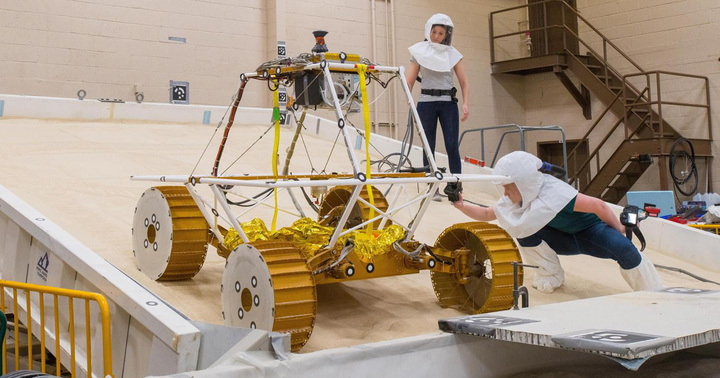
Promised the Moon
Last week, NASA made a shocking announcement: it would not be sending its $450 million rover, called the Volatiles Investigating Polar Exploration Rover (VIPER), to the Moon, where its state-of-the-art capabilities were anticipated to uncover secrets about water ice beneath the lunar surface.
The reason, according to NASA officials, is that VIPER’s costs had ballooned. The rover was already fully built, but it was deemed too expensive to conduct further crucial tests that would prove it was spaceworthy.
The news stunned many in the community — and it seems the fallout may not be over yet. Scientists are now expressing their outrage at the cancellation of the VIPER mission, with some are even putting pressure on the US government to reverse the decision.
Penning an open letter to Congress, space scientists have requested that lawmakers refuse NASA’s “unprecedented and indefensible” cancellation of the mission. It was last reported as having over 1,000 signatures, per Scientific American.
“We are deeply concerned by NASA’s shocking announcement on July 17 that it intends to discontinue the VIPER lunar rover mission,” the letter reads. “VIPER was to be a groundbreaking American project and the first NASA mission to characterize the origin and distribution of water ice on and below the surface of the Moon.”
VIPER-Shaped Hole
NASA has argued that VIPER’s soaring costs threatened other commercial payload missions to the Moon, which are meant to demonstrate the capabilities offered by private partners ahead of a crewed lunar mission.
Many in the field, though, aren’t buying NASA’s explanation, arguing that the mission’s objectives are far too significant to pass over.
“I was shocked and dismayed… This is maybe the most important mission for developing cislunar space that NASA has ever designed,” planetary scientist Phil Metzger of the University of Central Florida told Scientific American.
Norbert Schörghofer, a senior scientist for the Planetary Science Institute, called the cancellation of VIPER “a major loss for science.”
“No other robotic U.S. mission to the moon in the next three years has the [needed capabilities, required mobility] and a way to explore the subsurface, not just the surface,” he told Space.com.
Cost Calculus
VIPER had been beset with setbacks for years leading up to the decision. It was originally slated to launch in 2023, but the COVID pandemic hamstrung that timeline.
There were also major delays with the lunar lander that was meant to carry the rover to the Moon, Griffin, built by the commercial firm Astrobiotic. Neither the rover nor the lander were expected to be ready until 2025.
As things are, VIPER will be scrapped for parts, while Griffin will still fly using a mass simulator in place of the real rover. Adding insult to injury, NASA will still be paying the firm $323 million, on top of the $450 million spent building the rover.
Who’s to blame? It was NASA’s decision, but it’d be remiss not to highlight the tough budget situation over there, which you might pin on the federal government. Regardless, unless something changes, this loss will sting.
More on NASA: Crew Who Spent a Year in Simulated NASA Mars Base Say They Spent a Lot of Time Watching TV